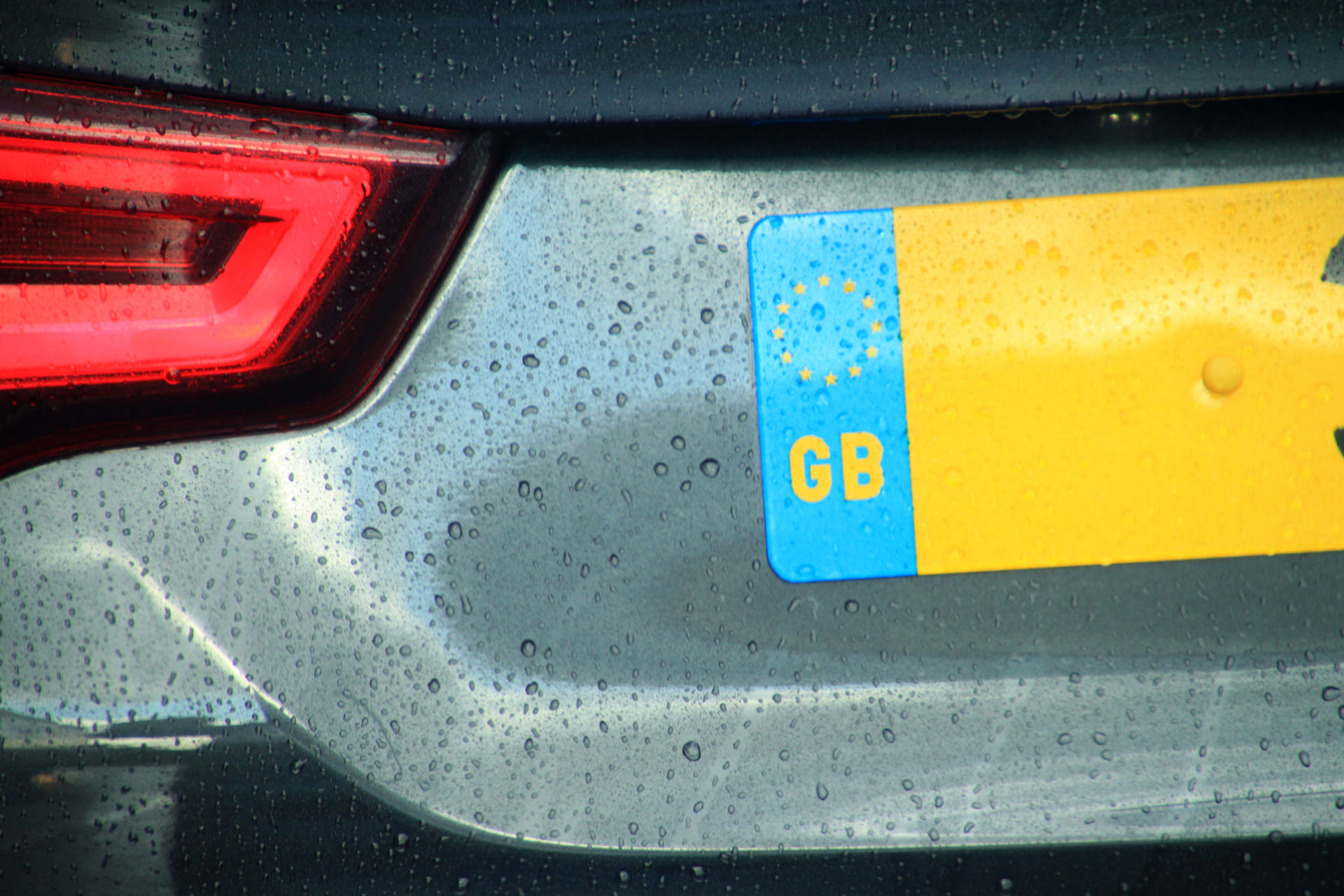*The information in this article is accurate from March 2022. UK number plates laws are subject to ongoing change.
The UK number plate system we recognise today was first launched back in 2001 – and there’s still a lot about this system that many everyday drivers don’t know. Did you know, for example, that Britain remains one of the few countries to have issued age-related registration numbers to its cars?
For decades, licence plates used suffixes at first (1963 -1983) and then prefixes (1983 – 2001) to identify the age of a vehicle’s registration.
It wasn’t until the new update in 2001 that it became (apparently) more simplified than previously. But today, there’s still uncertainty about what the numbers and letters mean, and if you decide to customise yours, whether that changes the status of a car.
In our comprehensive guide to number plates in the UK, we not only provide a condensed and practical lesson on how the system works, but we help you determine the implications of changing, customising and updating your number plates, and what it means for your car.
So, if you find yourself wondering…
- Is it legal to change my number plates?
- What customisations are allowed?
- Does changing my number plates affect my insurance?
- … you can find out everything you need to know about your car’s registration plate below.
or call us on 0208 329 1150
Skip Ahead
If you’ve got a question in mind, and you’re here to find the answers, you can jump straight to the right information when you click from the following options below:

Number Plates, Explained
The number plate system as we know it was introduced back in September 2001, impacting drivers and their registrations in the UK. A typical licence plate consists of: 2 letters, 2 numbers, and then 3 letters again. Every default number plate in the UK will have 7 characters, which will only change if you customise this part of your vehicle.
Here’s what a 2022 number plate might read like: AB22 CDE or AB71 CDE
Even if it looks cryptic, the numbers on a UK licence plate have meaning. Those numbers will refer to the year and six-month period when a car was first registered – this could be between either March to August, or September to February. Think of these numbers as an age identifier for a vehicle’s registration.
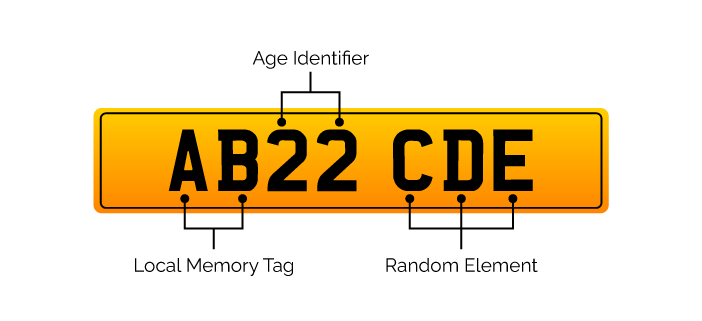
Demystifying the UK Number Plate Format
The first two letters are letters that appear on a UK number plate are known as a “local memory tag” and they identify the date registration of a vehicle. The first letter will represent the region and the second letter is the DVLA local office. The only exception is the letter “Z”, which is as a wild card and is not designated to a region or area.
These letters are randomised and allocated to the dealership by default – not the buyer – and this will be used to give a vehicle its unique identity.
If you’re thinking of getting customised number plates, the height and width of the numbers used on the characters, and the font, all matter in what the DVLA or Driver and Vehicle Licensing Agency considers a legal number plate here in the UK. Did you know, the colours, fixtures and fastenings that are used on your plate should be minimal enough to not obstruct how legibly the characters appear on your plate? (Jump to custom number plates).
What Are Q-Plates?
The letter “Q”, according to the RAC, is not in use in the standard vehicle registration. Regardless, you may identify vehicles driving with this letter on their plates.
Q-plates will be issued only by the DVLA to those cars who have a vague age or identity; any previous vehicle registration will be invalidated by Q-plates.
The types of cars you’ll typically see identified with Q-plates include:
- Kit cars or vehicles that have been self-built
- Modified vehicles
- Imported vehicles
- Cars that don’t have a VIN (or Vehicle Identification Number)
- Vehicles with classified histories, such as ex-military-use vehicle
Types of Number Plates in the UK
There are, in the UK, five different types or styles of number plates that you can identify. These include:
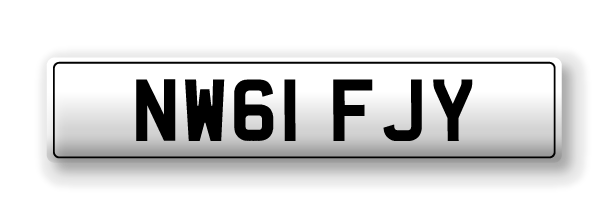
Current Plates (or New Number Plates)
Put into practice from 2001 onwards, this is the most common plate you’ll seen in circulation in the UK.
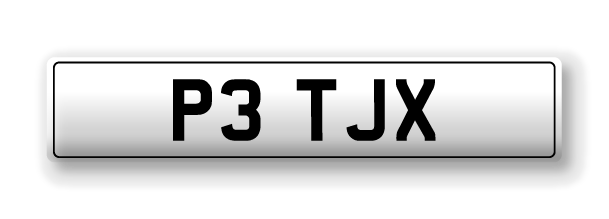
Prefix-Style Registrations
First issued in 1983, this sequence was reversed where it was widely believed to have changed because suffixes had been exhausted up to this point.
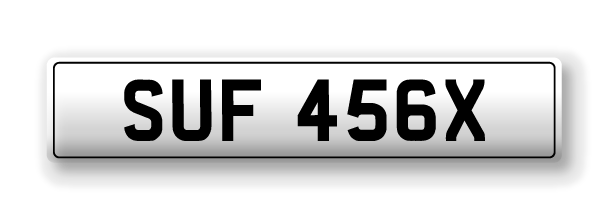
Suffix-Style Registrations
Introduced in 1963, the suffix system was developed to address increasingly limited options for dateless combinations.
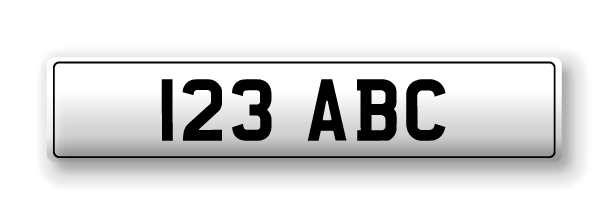
Dateless-Style Registrations
Introduced in 1903, numberplates were introduced due to the increase in traffic and risk of misidentification. A1, for example, was the first number plate issued in the London area.

Did you know…
In 1999, the number plate system evolved, and saw new registrations issued twice annually instead of once annually?
Flags, Symbols & Other Identifiers on UK Number Plates
According to the UK government, before displaying number plates with flags, symbols, and other identifiers, you should follow certain rules. The following flags can be displayed on the left of a plate:
- The Union Jack
- Cross of St George
- Cross of St Andrew (or the Saltire)
- The Red Dragon of Wales
Acceptable national identifiers include:
| Nation | Representing Letters |
|---|---|
| UNITED KINGDOM | UK |
| GREAT BRITAIN | GB |
| CYMRU | CYM or Cym |
| ENGLAND | ENG or Eng |
| SCOTLAND | SCO or Sco |
| WALES | Wales |
The rules with flags on UK number plates include:
- A flag cannot be below the identifier
- A flag or letters cannot be on the plate’s margin
- Flag or letters cannot be more than 50 mm in width
What if You’re an Expat?
For those living and/or working in Spain, Cyprus, or Malta, you absolutely must display a UK sticker on your number plate when you’re driving in these respective countries.
You do not, however, need a UK sticker if you’re living, and therefore driving, in Ireland.
Driving Outside of the UK
You do not need a UK sticker if you have a number plate that already has a UK identifier (with a Union Jack).
In certain circumstances, according to the UK government, you will need to clearly display a UK sticker on the rear of your vehicle if your car has:
- A GB identifier with a Union flag
- A Euro symbol
- A national flag of England, Scotland, or Wales
- numbers and letters only
Green Plates
As of 8th December 2020, qualifying zero emission vehicles (or ZEVs) can display a green flash on the left of a number plate. Eligible vehicles are those with ultra-low emissions, which can now display a “green plate” as outlined above to differentiate its environmental impact.
Age Identification on New Number Plates
Once you understand how age identifiers work, you can quickly calculate the age of a vehicle in the UK.
Use the following age identifiers to check on the age of a vehicle:
| Year | 1 March to end August | 1 September to end February |
|---|---|---|
| 2001/02 | 51 | |
| 2002/03 | 02 | 52 |
| 2003/04 | 03 | 53 |
| 2004/05 | 04 | 54 |
| 2005/06 | 05 | 55 |
| 2006/07 | 06 | 56 |
| 2007/08 | 07 | 57 |
| 2008/09 | 08 | 58 |
| 2009/10 | 09 | 59 |
| 2010/11 | 10 | 60 |
| 2011/12 | 11 | 61 |
| 2012/13 | 12 | 62 |
| 2013/14 | 13 | 63 |
| 2014/15 | 14 | 64 |
| 2015/16 | 15 | 65 |
| 2016/17 | 16 | 66 |
| 2017/18 | 17 | 67 |
| 2018/19 | 18 | 68 |
| 2019/20 | 19 | 69 |
| 2020/21 | 20 | 70 |
| 2021/22 | 21 | 71 |
| 2022/23 | and so on | until 50/00 in 2050/51 |
How to Read Old Number Plates
But what about vehicle registrations that pre-date the 2001 system? You may come across number plates that look unusual to those on the new number plate system. You can use the following table to identify the dates of old plates where a vehicle’s registration pre-dates 2001.
| Old suffix letters | |
|---|---|
| Jan ’63 to Dec ’63 | A |
| Jan ’64 to Dec ’64 | B |
| Jan ’65 to Dec ’65 | C |
| Jan ’66 to Dec ’66 | D |
| Jan ’67 to Dec ’67 | E |
| Jan ’67 to Dec ’68 | F |
| Jan ’68 to Dec ’69 | G |
| Jan ’69 to Dec ’70 | H |
| Jan ’70 to Dec ’71 | J |
| Jan ’71 to Dec ’72 | K |
| Jan ’72 to Dec ’73 | L |
| Jan ’73 to Dec ’74 | M |
| Jan ’74 to Dec ’75 | N |
| Jan ’75 to Dec ’76 | P |
| Jan ’76 to Dec ’77 | R |
| Jan ’77 to Dec ’78 | S |
| Jan ’78 to Dec ’79 | T |
| Jan ’79 to Dec ’80 | V |
| Jan ’80 to Dec ’81 | W |
| Jan ’81 to Dec ’82 | X |
| Jan ’82 to Dec ’83 | Y |
| Old prefix letters | |
|---|---|
| A | Aug ’83 to July ’84 |
| B | Aug ’84 to July ’85 |
| C | Aug ’85 to July ’86 |
| D | Aug ’86 to July ’87 |
| E | Aug ’88 to July ’89 |
| F | Aug ’89 to July ’90 |
| G | Aug ’90 to July ’91 |
| H | Aug ’91 to July ’92 |
| J | Aug ’92 to July ’93 |
| K | Aug ’93 to July ’94 |
| L | Aug ’94 to July ’95 |
| M | Aug ’95 to July ’96 |
| N | Aug ’96 to July ’97 |
| P | Aug ’97 to July ’98 |
| R | Aug ’98 to July ’99 |
| S | Aug ’99 to Feb ’99 |
| T | March ’99 to Aug ’99 |
| V | Sept ’99 to Feb 2000 |
| W | March 2000 to Aug 2000 |
| X | Sept 2000 to Feb 2001 |
| Y | March 2001 to Aug 2001 |
When Do the New Licence Plate Numbers Come Out?
Twice a year in the UK, the DVLA issues new number plates with updated age identifiers. This happens bi-annually, and new plates are released in March and then again in September.

Did you know…
The existing number plate system will be circulated, it’s estimated, until February 2051. At this time, the DVLA will be required to invent a new system for age identification.
Do I Need to Update My Insurance Policy When I Get New Number Plates?
If you have new number plates, you will need to update the DVLA as well as your insurance company. Typically, when policy details change – or your circumstances change – you will need to communicate this with your insurance provider. The same applies to number plates in the UK: you should arrange for your insurer to know about any new, updated plates before they’re put on, but not too early that your existing plates are outdated.
Changing plates may not affect your premiums, but typically any admin changes to a policy will incur fees.
Test Your Number Plate Knowledge
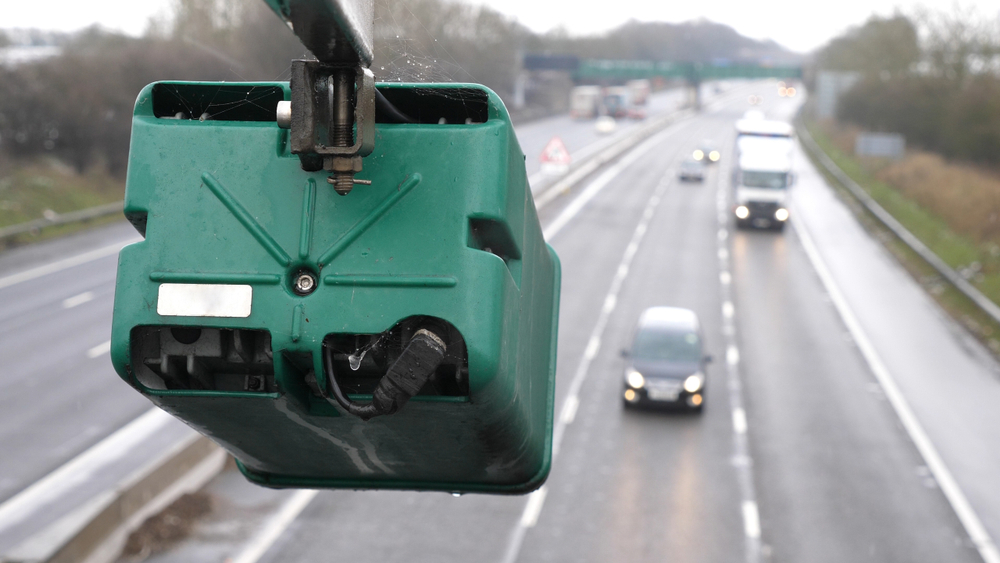
Legal and Illegal Number Plates in the UK
Number plates were introduced in the UK to ensure that everyone driving on the road could be easily identified. Therefore, it’s no surprise that visibility is centric to number plate laws in the UK.
The UK government provides official advice and guidance for “displaying number plates”, including rules outlined under BS AU 145e. Vehicle registration marks must be in accordance with The Road Vehicles (Display of Registration Marks) Regulations 2001, which largely governs what’s considered legal in terms of registration plates and marks.
The basic rules for UK number plates includes:
- plates must be created from a reflective material
- plates must exclude patterns from the background
- front plates must show black characters on a white background
- rear plates must show black characters on a yellow background
- plates must contain information about the supplier
- plates fitted after 1 September 2021 must display BS AU 145e
Since 2021, it’s expected that characters on a plate are non-removable, not reflective and are a single shade of black.
You can get issued a hefty fine for having your number plates incorrectly displayed. This includes where:
- Number plates are dirty, concealed, and illegible
- Number plates use improper fonts, colours, customisations, and other personalisation
- Number plates deviate too far from the standard issue plates
Number plate adherence in the UK can be strict, but that doesn’t mean your licence plates are automatically illegal if they’re different.
Here’s a visual example of some of the technical requirements to make your number plates legal:
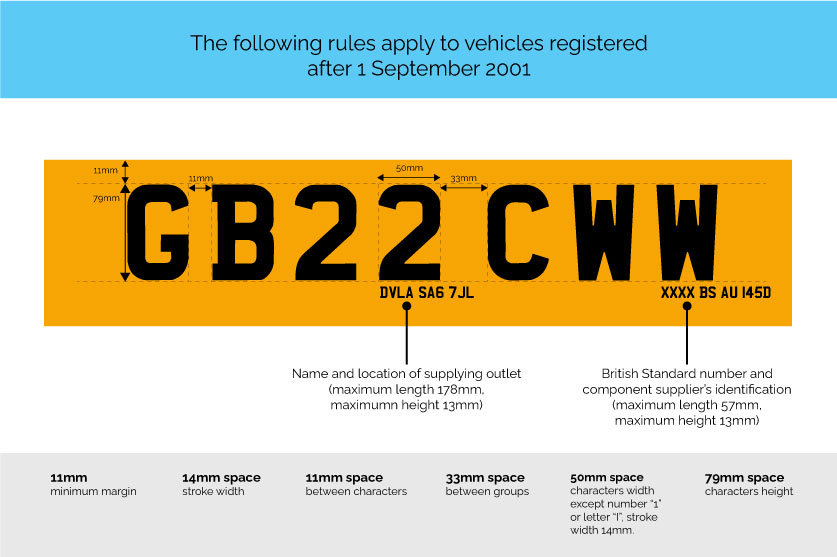
Can You Get Points for Illegal Number Plates?
You can be penalised for driving with illegal or concealed plates under the mentioned UK laws. This means that you could be issued with a fine of up to £1,000 and your vehicle will fail an MOT test with incorrect plates.
It’s not only a costly mistake, but you will have the inconvenience of re-booking an MOT test again just to the correct number plates.

You could be fined up to £1,000 and your vehicle will fail its MOT test if you drive with incorrectly displayed number plates.
It Doesn’t End There…
At present, if you’re caught with illegal number plates you won’t be penalised with points against your licence. But, these penalties could be evolving in the UK in the next couple of years. The Vehicle Registration Offences (Penalty Points) Bill, which is currently under consultation in the UK government, could be revising the punishment for improper and, therefore, illegal plates. A likely minimum of 3 points would be issued if this bill is ratified, making it more urgent than ever to ensure you’re driving on correct plates.
What Are the Number Plate Rules and Laws That Affect Me?
There are many laws that determine a car’s roadworthiness in the UK and number plates is one of those strictly regulated areas. It’s not just about ensuring your car is identifiable to a local authority, but rather as a courtesy to pedestrians and other road users.
Driving without licence plates will cause you to get fined. But when you do display your plates properly, are there any rules that you should be aware of?
Concealed number plates, even if it’s unintentionally caused by dirt, can leave you dealing with the headache of a fine. But the drivers who will most likely be affected are those making use of custom licence plates.
What If I’m Towing?
It’s a matter of UK law that, if you’re towing a trailer, you will need to use and display the same number plates as your vehicle. The plate should always be displayed at the rear, so it’s identifiable.
Customised Number Plates and UK Law
Are Tinted Plates Legal?
No. As a key criterion for number plates, they should be clearly displayed and have good visibility in terms of reflective levels. As tinted plates reduce the reflectiveness of a number plate, they would not be considered legal in the UK.
Are Gel / 3D / Raised Number Plates Legal?
As of March 1st 2022, any number plates that give a 3D effect, including gel-coated or raised characters, are still considered legal on UK roads, according to the DVLA.
There are different ways that drivers can achieve a 3D effect on their number plates – one of the most common ways being gel characters.
3D Plates, Explained
3D number plates are formed where laser-cut acrylic characters are risen. 3D plates (sometimes 4D) are, at the time of writing, considered legal as long as they don’t compromise the rules set out in BS AU 145e, especially where black characters must be used.
This is confirmed by the DVLA, who state: “Your number plates can also have 3D (raised) characters”.
Other areas these changes affect include:
- reflectiveness of the plate.
- font size
- space between lettering
Even though the DVLA claims that 3D plates are legal on the road in the UK, there is still some confusion over whether you can have them. Whilst some news reports state that 3D, or raised, characters are no longer allowed, you should use the DVLA’s official guidance to judge what’s considered a legal customisation to your number plate.
Are Neon / 4D Plates Legal?
Like the rules regarding 3D plates, 4D may be unlawful if they’re counteractive to the eligibility of your plates. That means plate customisations can’t obstruct the visibility or eligibility of your plates to be detected by an ANPR camera.
Are Black and White Number Plates Legal?
Vehicles manufactured before 1981 can apply for an historic tax class as of April 1, 2021. This means only those vehicles who are historic are permitted to display black and white plates. Strictly speaking, only those cars before this date (1980) will be permitted to have black plates and white (or silver) characters.
Are Pressed Number Plates Legal?
No. There is another requirement for legal number plates in the UK and this concerns the material that’s used to make the plate. A plate’s material must be flexible enough to bend back into shape. For this reason, pressed metals plates are considered illegal in the UK.
Are Carbon Fibre-Style Letters on Plates Legal?
No. Under existing DVLA regulations and standards – BS AU 145e – carbon fibre lettering is no longer considered legal.
Commonly, drivers with custom plates who are found to be caught out against the law have the following issues with how they’ve personalised their registration:
- Font changes
- Atypical or custom spacing
- Using bolts or fastenings to alter the appearance of letters/numbers on their plates
- Changes that impact reflective material or background of a plate
Legal Number Plates
- Conform to BS AU 145e
- Remain visible, including clean from dirt
- Displays the correct registration of your vehicle
- Customisations aren’t counterintuitive to any of the above
Illegal Number Plates
- Tinted
- Non-readable by an ANPR camera
- Contain different fonts, strange spacing, or using bolts to alter the registration in any way
- Changes to the reflective material of plates
What’s an ANPR Camera & What Has it Got to do With My Number Plates?
ANPR is short for Automatic Number Plate Recognition. It refers to a type of technology that reads eligible plates and records location data, like a kind of surveillance. This means that your information – using your number plates – can be registered by a camera or scanner in the area and then cross-referenced for traffic and law enforcement.
Given the variable weather patterns and increasing traffic in the UK, there have been updates to regulate safety on the roads and for pedestrians.
Under British Standard BS AU 145e, rules regarding number plates and surveillance have improved – and this will affect the standards that determine road legal plates. These revisions to the law became legal as of September 1, 2021.
BS AU 145e Changes
- Number plates’ durability has been upgraded – their resistance to impact (whether minor stone chippings or major car collisions) has improved to ensure plate longevity
- They don’t bend, or what’s called plate delamination.
- Their shape and size must remain consistent under thermal change, whether hot or cold.
- Their eligibility isn’t compromised even after loose dirt and debris is loosened, or what’s known as abrasion resistance
- They can be removed from a vehicle
- They are strong weathering, which is tested at 2,275 hours of UV exposure (a number more than twice the length of other European plate tests).
There are rules when it comes to what’s called retroflection. Those are as follows:
… black digits cannot exceed 0.5 retroreflective units (cd/lx). A white or yellow background, on the other hand, shouldn’t go beyond 150 retroreflective units.
In order for an ANPR camera to detect a plate, it must be able to understand the contrast between digits and the plate background. This contrast is read in what’s called the near infrared (NIR) spectrum.
When it comes to design, there are certain rules that regulate whether number plates will be considered legal for road use.
This means your number plates must:
- Comply with rules so that ANPR cameras can be fully effective, so solid black digits must be used.
- Include the supplier’s business name and postcode in the centre-bottom of a plate
- Include the manufacturers name
- Be eligible for ANPR cameras, including reflected in spacing on the registration
Are Illegal Plates More Common Than You Think?
According to Halfords, 98% of UK drivers can tell the difference between illegal and legal number plates. What’s more concerning is how those under the age of 25 are more likely to be caught out buying illegal plates (when compared to those 45 and over). With the high risk of fines for drivers being caught on the wrong side of UK number plate law, having legal plates can save you a lot of headache in the long run.
You’ll need convicted driver insurance if you’re caught out by the law. Number plates are, at present, only fining those drivers caught with illegal plates, but that doesn’t mean things won’t change.
Worried About Your Licence Plate?
Are your licence plates anything but ordinary? Number plate changes should always be updated with your insurer, and these shouldn’t count against you. Speak to a specialist like Keith Michaels today about your car insurance needs.


